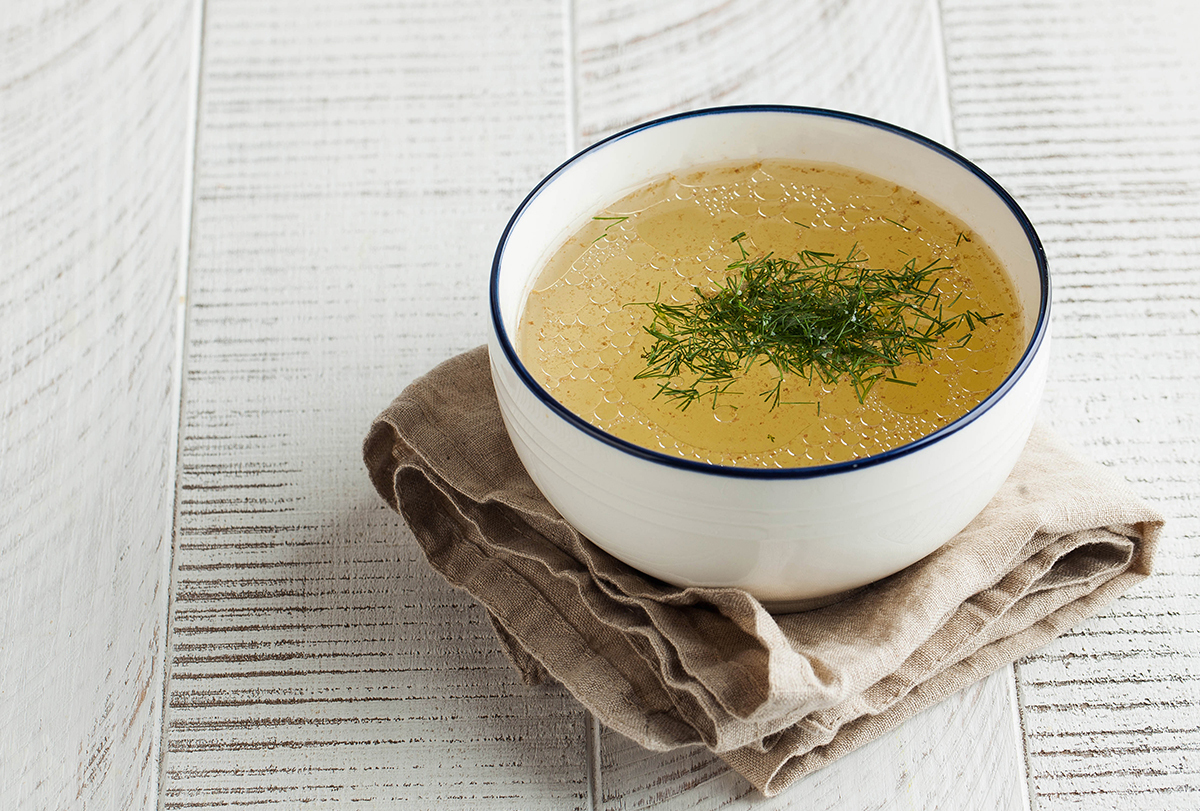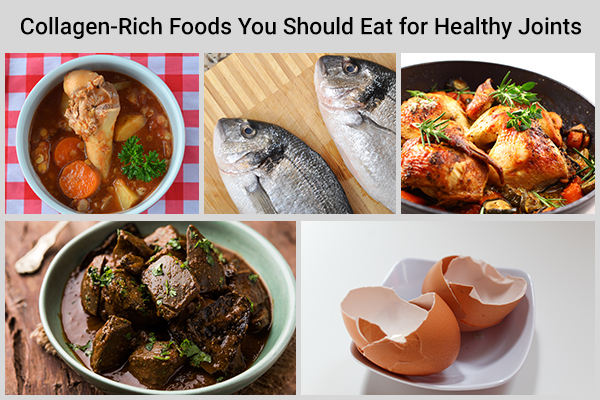In this article:
Joint paints are increasingly becoming one of the biggest burdens of the 21st century. Depending on how severe it is, it can be extremely debilitating, causing a reduction in mobility and decreasing the independence of the sufferer.

Doctors prescribe many treatments for joint disorders such as osteoarthritis that include medication, physical therapy, and supplements. One of the main supplements needed to manage arthritis and joint pain is collagen.
What Is Collagen?
Collagen is a protein that is made up of amino acids. It has a branched structure and has different types depending on its amino acid profile. The main type of collagen that is involved in cartilage formation and ultimately helpful for joints is type II collagen. (1)
Studies have found oral supplementation of type II collagen was effective in reducing cartilage degradation in women suffering from knee osteoarthritis. (2)
Collagen-Rich Foods You Should Eat for Healthy Joints
Consuming the following foods can help in keeping your joints in the pink of health.
1. Bone broth
Bone broth made from the bones of cow, lamb, or chicken is a rich source of gelatin, which is broken down into collagen in the body. Bone broth can be an effective and natural remedy for joint pains.
Trials have found that collagen from bone marrow (in the form of injections) reduces pain and increases mobility after just the first treatment. (3)
An additional benefit of bone broths is that it is a strong anti-inflammatory agent. Due to its abundant nutrients that are also in their easily digestible form, it can help by bringing relief for chronic inflammatory conditions including arthritis. (4)
How to make bone broth:
- Add 5–6 pieces of bones to a large pot and fill it with 1.5 liters of water.
- Add 1 whole onion, a 2-inch piece of ginger, 4–5 cloves of garlic, 4–5 whole black peppercorns, and salt to taste.
- Bring to a boil and simmer on low for 30 minutes.
- Strain and drink 1 cup of broth daily.
- Repeat this process one more time with the same set of bones before discarding.
It is recommended to use bones from the foot of the animal or those that are rich in bone marrow. Simply ask your butcher to set aside some pieces for you. Since most people avoid these bones, they are usually very affordable.
2. Fish with skin
Collagen sourced from fish bones and skin is called marine collagen. Animal studies have found collagen sourced from fish to have anti-arthritic potential. (5)
Marine collagen supplements are available and can be effective in reducing joint pains. You can also eat fish twice a week for the same benefit.
3. Chicken
Meat from chicken, just like its bones, is a great collagen source to be included in the diet.
Both lab studies and human trials have found that eating collagen from chicken improved cartilage structure around the joints and is an effective remedy for preventing or treating osteoarthritis. (6)
You can prepare bone broth from chicken bones, prepare chicken soup with its meat, or eat chicken 2–3 times a week.

4. Organ meats
Organ meats such as kidney, liver, and tongue from cow or lamb are also a rich source of collagen (7) that can be effective in preventing joint disorders.
Though direct studies are few, a low intake of organ meats was observed in people with rheumatoid arthritis. (8)
5. Eggshell membrane
Eggshell membrane presents itself as a source of collagen for vegetarians. It is the thin white membrane that is present in the inner layer of eggshells.
A study of postmenopausal women, who are most prone to cartilage degradation and resulting joint disorders, found that supplementing with egg membrane increased cartilage production and also decreased joint pain and stiffness following exercise. (9)
How to prepare eggshell membrane for consumption:
- Peel the inner layer away from the eggshell.
- Wash and then dry it on a low temperate in the oven for 30–40 minutes.
- Powder the dried membrane and add it to smoothies or soups for a collagen boost.
Role of Collagen in Joints
The main reason joint disorders develop is the degradation of cartilage, which is a connective tissue present between two bones in the joints. It acts as a shock absorber and reduces friction during movement. (10)
Cartilage is made up mostly of collagen, contributing to 60% of its structure. (1)(11) Naturally, a lack of it will cause joint degradation, which leads to pain and discomfort.
Most-Asked Questions About Collagen for Joint Health
What can vegetarians and vegans eat for collagen?
Unfortunately, there are no vegetarian or vegan sources of collagen. You can consume supplements or prepare eggshell membrane powder.
Studies have shown positive results for joint pain recovery with a daily supplementation dose of 5–15 g/day of collagen peptides for adults. (12)
Children can also be given similar daily dosages to support healthy bone development. (13)
Can children be given collagen?
Collagen is a naturally occurring substance in our bodies. It can be safely given to children as part of their regular diet.
How long does it take for collagen supplements to improve joint pains?
You may need to take collagen supplements for a long time (3–6 months) before you notice results. However, you may experience some immediate relief from pain.
Results can also vary based on overall nutritional status, food intake, exercise levels, medication status, presence of additional diseases, and age.
Practical Takeaway
- Joints have a protective layer between them called cartilage that protects them from wear and tear during movement.
- Cartilage is made up of collagen, a protein, and its deficiency can result in joint pains and joint disorders such as arthritis.
- Out of all the types of collagen, type II is the most beneficial for joints.
- Bone broth, fish with skin, chicken, and organ meats are good sources of natural collagen.
- Egg membrane, the thin white layer in the inner layer of eggshells, is suggested as a natural collagen source for vegetarians.
- Was this article helpful?
- YES, THANKS!NOT REALLY


